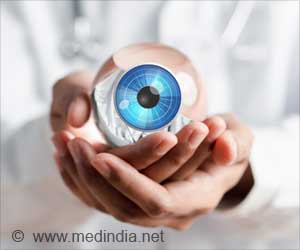
In their paper, the researchers demonstrated wireless power transfer to a millimetre-sized device implanted five centimetres inside the chest on the surface of the heart-a depth once thought out of reach for wireless power transmission.
Ada Poon, Sanghoek Kim and John Ho say the research is a major step toward a day when all implants are driven wirelessly.
Beyond the heart, they believe such devices might include swallowable endoscopes-so-called "pillcams" that travel the digestive tract-permanent pacemakers and precision brain stimulators; virtually any medical applications where device size and power matter.
Implantable medical devices in the human body have revolutionized medicine. Hundreds of thousands if not millions of pacemakers, cochlear implants and drug pumps are today helping people live relatively normal lives, but these devices are not without engineering challenges.
First off, they require power, which means batteries, and batteries are bulky. In a device like a pacemaker, the battery alone accounts for as much as half the volume of the device it drives. Second, batteries have finite lives. New surgery is needed when they wane.
Advertisement
Last year, Poon made headlines when she demonstrated a wirelessly powered, self-propelled device capable of swimming through the bloodstream. To get there she needed to overturn some long-held assumptions about delivery of wireless power through the human body.
Advertisement
There is an indirect relationship between the frequency of the transmitted radio waves and the size of the receive antenna. That is, to deliver a desired level of power, lower frequency waves require bigger coils. Higher frequency waves can work with smaller coils.
"For implantable medical devices, therefore, the goal is a high-frequency transmitter and a small receiver, but there is one big hurdle," Kim said.
Existing mathematical models have held that high frequency radio waves do not penetrate far enough into human tissue, necessitating the use of low-frequency transmitters and large antennas - too large to be practical for implantable devices.
Ignoring the consensus, Poon proved the models wrong. Human tissue dissipates electric fields quickly, it is true, but radio waves can travel in a different way-as alternating waves of electric and magnetic fields.
With the correct equations in hand, she discovered that high-frequency signals travel much deeper than anyone suspected.
"In fact, to achieve greater power efficiency, it is actually advantageous that human tissue is a very poor electrical conductor," Kim said.
"If it were a good conductor, it would absorb energy, create heating and prevent sufficient power from reaching the implant," Kim said.
According to their revised models, the researchers found that the maximum power transfer through human tissue occurs at about 1.7 billion cycles per second.
The discovery meant that the team could shrink the receive antenna by a factor of ten as well, to a scale that makes wireless implantable devices feasible.
At that the optimal frequency, a millimetre-radius coil is capable of harvesting more than 50 microwatts of power, well in excess of the needs of a recently demonstrated eight-microwatt pacemaker.
The study has been published in the journal Applied Physics Letters.
Source-ANI











